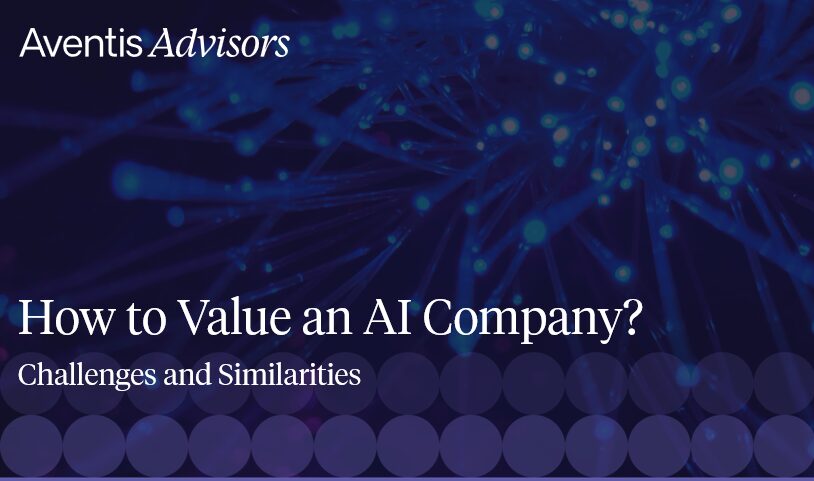Introduction
In the booming market for artificial intelligence, the prospect of selling your AI company can be incredibly exciting. However, beneath the surface of innovative AI algorithms and impressive growth lies a critical layer of scrutiny that can make or break a deal: risk. As an AI founder, understanding and proactively addressing potential risks related to data governance, ethics, and compliance isn’t just good practice – it’s a fundamental de-risking strategy that will significantly enhance your company’s attractiveness and valuation in the eyes of potential buyers.
This article delves into the crucial areas buyers scrutinize during due diligence and outlines proactive steps you can take to ensure your AI company is not just innovative, but also impeccably robust. Robust AI risk management not only benefits buyers and sellers but also helps protect the interests of society as a whole.
The days of simply showcasing a groundbreaking AI model are over. Acquirers, whether strategic giants or astute private equity firms, are now acutely aware of the regulatory, reputational, and operational liabilities that can arise from improperly managed data and unchecked AI systems. This means a strong risk management framework is essential, and organizations across industries are increasingly adopting such frameworks to manage AI risks. AI is transforming the world and reshaping global business practices, making effective risk management more important than ever. In fact, AI and machine learning have been used in risk management for many years, particularly in areas like fraud detection and cybersecurity, demonstrating their reliability and value.
The Buyer’s Lens: What They’re Really Looking For
Imagine a buyer’s legal and technical teams poring over your operations. Their primary objective is to uncover any hidden risks that could translate into future costs, fines, or public backlash, and to assess financial, regulatory, and operational risks throughout the process. Buyers must also manage a variety of tasks during due diligence, such as scheduling, documentation management, and risk assessments, aiming to efficiently identify and address potential issues before proceeding. For an AI company, this scrutiny zeroes in on AI and risk management:
- Data Sourcing and Lineage: Where does your data come from? Is it legally obtained? Do you have clear documentation of its origin and transformations? This is fundamental for building responsible AI systems.
- Buyers also review communications such as emails and internal messages, as these can provide insights into stakeholder intentions, sentiment, and contractual details relevant to M&A activities.
- Privacy and Data Protection Compliance: Are you adhering to global privacy regulations like GDPR, CCPA, and increasingly, the stringent requirements of the EU AI Act? Legal risks are a major concern here.
- Algorithmic Bias and Fairness: Is your AI system inherently biased, leading to discriminatory outcomes? Can you demonstrate efforts to detect and mitigate bias in your AI technologies?
- Explainability and Transparency: Can you explain how your AI system arrives at its critical decisions? Is there a clear audit trail? This helps ensure accountability within your systems.
- Security and IP Protection: How robust are your data security measures? Are your proprietary models and data sets adequately protected?
- Due Diligence Accuracy: Minimizing errors in documentation and compliance checks is crucial to ensure accuracy and efficiency throughout the process.

Failing to adequately address any of these areas can lead to significant delays, discounted valuations, or even the collapse of a deal, highlighting the importance of thorough risk assessment and the valuable insight buyers gain from it.
Proactive Steps to De-Risk Your AI Company
The good news is that by taking deliberate, proactive measures, you can transform these potential risks into powerful assets that build buyer confidence. The benefits of proactive risk management include increased trust, smoother transactions, and greater value for both buyers and sellers. The adoption of best practices in AI risk management is essential for staying ahead in a competitive landscape. This includes the creation of robust frameworks and models to support effective risk management strategies. AI founders have a responsibility to ensure ethical and compliant practices throughout the organization, while fostering a culture of accountability and transparency in their AI companies. This approach to AI risk management is a game changer.
1. Robust Data Governance: Know Your Data Inside Out
Data is the lifeblood of AI. Buyers need assurance that your data practices are impeccable.
- Implement a Comprehensive Data Governance Framework: Define clear policies for data collection, storage, usage, retention, and disposal. Assign responsibilities for data quality and compliance across your organization. Allocate sufficient resources to ensure data quality and compliance. This framework is a cornerstone of effective risk management and should be implemented effectively to minimize risks.
- Document Data Lineage and Provenance: For every data set used in your AI models, maintain meticulous records of its origin, how it was collected (e.g., public sources, licensed data, internal collection), the consent obtained (if applicable), and any transformations applied. This traceability is paramount, especially when dealing with large data sets and the challenges they present in managing vast amounts of training data.
- Data Minimization and Anonymization/Pseudonymization: Adhere to the principle of collecting only necessary data. Where possible, anonymize or pseudonymize personal data to reduce privacy risks. This reduces the potential risks associated with handling large volumes of sensitive information.
2. Mastering Privacy and Compliance: The Regulatory Maze
The global regulatory landscape for data and AI is evolving rapidly. Staying ahead of the curve is non-negotiable.
GDPR and CCPA compliance as baseline
Ensure your data processing activities fully comply with the General Data Protection Regulation (GDPR) if you operate in or process data from the EU, and the California Consumer Privacy Act (CCPA) if relevant. This includes robust consent mechanisms, data subject access request (DSAR) procedures, and clear privacy policies. Leverage technology to support compliance with privacy regulations and streamline these processes. These are key for mitigating legal risks.
Proactive EU AI Act readiness
The EU AI Act is setting a new global standard. If your AI system falls into a “high-risk” category (e.g., in critical infrastructure, law enforcement, employment), you must begin preparing for its requirements. This includes establishing a robust risk management system, data governance measures, technical documentation, human oversight, and potentially conformity assessments. Regulatory frameworks like the AI Risk Management Framework (AI RMF) have been developed to guide compliance and help organizations address AI risk management. Demonstrate that you’ve anticipated this monumental legislation for all your AI technologies.
Regular legal audits
Engage legal counsel specializing in AI and data privacy to conduct regular audits of your practices and ensure ongoing compliance with relevant laws in all jurisdictions where you operate or process data. It is essential to manage ongoing compliance and legal risks as regulations and best practices evolve.

3. Addressing Algorithmic Bias: Fairness by Design
Bias in AI models can lead to discriminatory outcomes, legal challenges, and significant reputational damage. Buyers will scrutinize your approach to fairness within your AI applications.
Bias detection and mitigation strategies
Implement systematic processes to detect bias in your training data and model outputs. This can involve using fairness metrics, conducting subgroup analysis, and employing techniques like re-weighting or adversarial de-biasing. This demonstrates a proactive approach to risk management and shows your commitment to developing new strategies to address emerging bias issues.
Diverse data sourcing
Actively seek out and incorporate diverse data sets that accurately represent the populations your AI systems will interact with, creating more representative models. This is essential for building truly responsible AI.
Human-in-the-loop oversight
For sensitive AI-powered applications, ensure there are mechanisms for human oversight and intervention to review and correct potentially biased AI decisions. Automating bias detection allows human reviewers to focus on higher-value tasks, enhancing accountability.
Ethical AI principles
Develop and publicly articulate your company’s ethical AI principles. This demonstrates a commitment to responsible AI development.
4. Enhancing Explainability and Transparency: Demystifying Your AI
Buyers, and increasingly regulators, want to understand how your AI works. “Black box” models are becoming less acceptable.
Model explainability tools
Utilize AI tools and techniques to provide insights into your AI model’s decision-making process. This could involve LIME, SHAP, feature importance analysis, or rule-based explanations for simpler machine learning models. Generative AI can be used to generate explanations or summaries of model decisions, making outputs more accessible. For example, an explainability tool might highlight which input features most influenced a credit approval decision. There are also examples of successful explainability implementations in regulated industries, demonstrating how transparency can be achieved in practice. These powerful tools support understanding.
Audit trails and version control
Maintain clear documentation of model development, training data changes, hyperparameter tuning, and performance metrics. Implement robust version control for all AI models.
Clear documentation for buyers
Prepare comprehensive documentation that explains your AI architecture, data flows, model validation processes, and any explainability measures in place. This includes the creation of clear and comprehensive documentation tailored for buyers. This simplifies due diligence for the buyer, showcasing your thorough risk management.
5. Fortifying Security and Intellectual Property: Protecting Your Core Assets
Beyond regulatory compliance, the security of your data and the protection of your intellectual property are paramount.
Robust cybersecurity measures
Implement industry-standard cybersecurity practices to protect your data and systems from breaches. Create robust security protocols to safeguard sensitive information and infrastructure. This includes encryption, access controls, regular vulnerability assessments, and incident response plans. Use virtual assistants to automate security monitoring and reporting, enhancing efficiency and responsiveness. This minimizes risks related to data exposure.
IP strategy and documentation
Ensure your AI models, proprietary data sets, and algorithms are legally protected through patents, copyrights, or trade secrets. Have clear documentation of ownership and development. Maintain integrity in the protection of intellectual property and data by adhering to ethical standards and transparent practices.
The Payoff: Confidence, Valuation, and a Smooth Exit
By proactively addressing data governance, ethics, and compliance, you’re not just mitigating risks; you’re actively building value. Building strong relationships with buyers and stakeholders is essential to enhance trust throughout the process. The role of your team is also critical in ensuring a smooth exit and successful transition. A buyer will see a company that is:
- Future-proof: Prepared for evolving regulations and ethical considerations for all AI technologies
- Reputationally sound: Less susceptible to public backlash or legal risks
- Operationally resilient: Built on solid, well-documented practices, especially in risk management
- More valuable: Reduced risks translate directly into a higher willingness to pay
Looking ahead, it is expected that AI adoption within M&A processes will continue to accelerate, driving greater automation in deal-making and transforming how due diligence and risk assessments are conducted. This anticipated growth of AI technologies is also expected to reshape the job market, requiring new skills and roles to manage and leverage these advancements.
In the competitive landscape of AI M&A, the companies that thrive are those that not only innovate but also inspire trust. For AI founders considering an exit, de-risking your company through meticulous data governance, ethical AI development, and unwavering compliance isn’t just a preparatory step – it’s your ultimate competitive advantage. This responsible approach to artificial intelligence ensures a more secure and lucrative future, while also addressing the unique challenges and opportunities present in your sector. Aligning your AI risk management strategies with overall business objectives is key to maximizing value and long-term success.
Why You Need a Technology M&A Advisor for Your AI Company
Every AI company is unique, just as every founder’s journey is unique. Therefore, it’s crucial to seek guidance from experts in the AI M&A space, particularly M&A advisors who specialize in the technology sector and can understand your specific situation.
Technology M&A advisors possess deep knowledge of market dynamics, valuation methodologies, and the intricacies of the M&A process. While you focus on managing your business, advisors diligently ensure that every detail is addressed and advocate for the best possible deal on your behalf. Technology M&A advisors’ success is intertwined with yours, and their expertise can often significantly influence the final sale price.
About Aventis Advisor
Aventis Advisors is an M&A advisor focusing on technology and growth companies. We believe the world would be better off with fewer (but better quality) M&A deals done at the right moment for a company and its owners. Our goal is to provide honest, insight-driven advice by clearly laying out all the options for our clients – including the one to keep the status quo.
Get in touch with us to discuss how much your business could be worth and how the process looks.
Sign up for our newsletter below to stay current on valuation trends.





